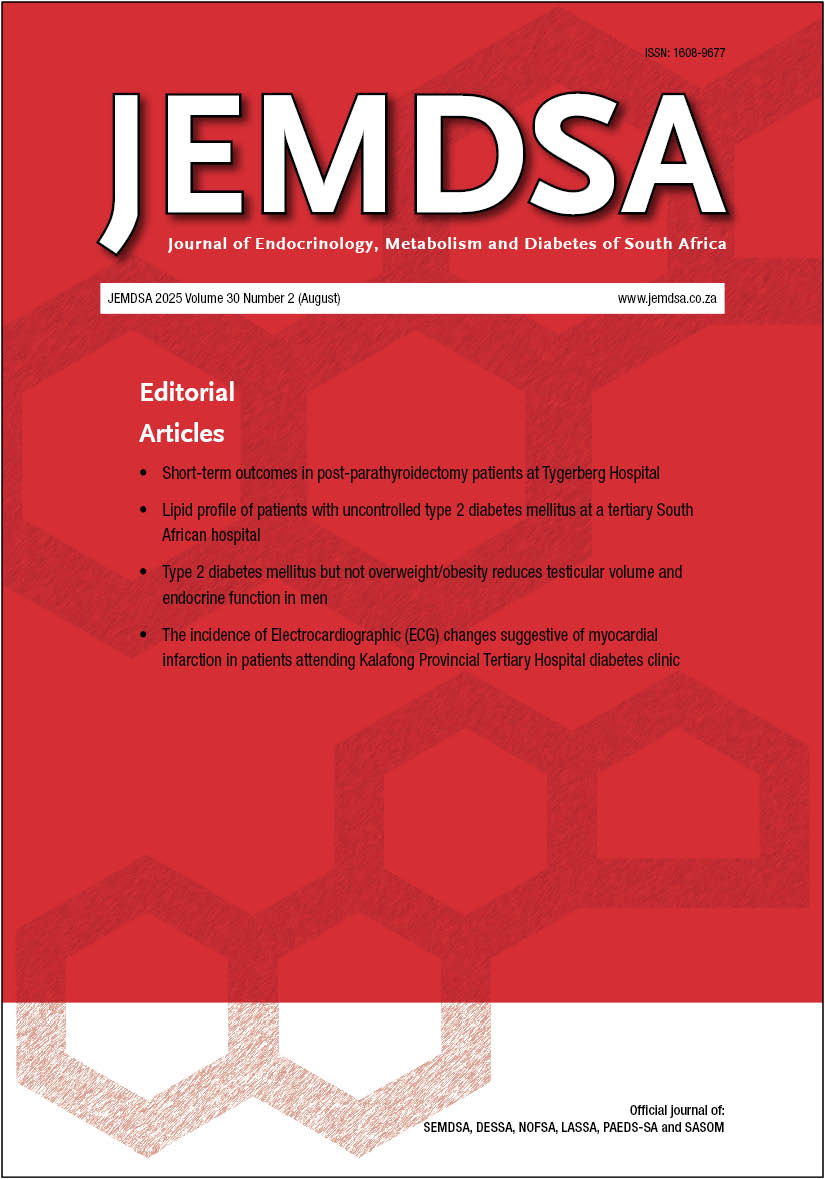Type 2 diabetes mellitus but not overweight/obesity reduces testicular volume and endocrine function in men
Keywords:
men, overweight/obesity, Type 2 diabetes mellitus, testicular volume, testosteroneAbstract
Background: Type 2 diabetes mellitus (T2DM) is commonly associated with decreased serum testosterone levels and hypogonadotropic hypogonadism in affected men. Testicular volume is an important indicator of serum testosterone levels. However, there are limited data on testicular volume among men with T2DM compared with their healthy counterparts. This study aimed to investigate the effect of T2DM and overweight/obesity on testicular volume as well as the factors associated with low testicular volume in T2DM and healthy men.
Methods: This cross-sectional study involved 358 T2DM men and 179 age-matched healthy controls, categorised into four groups: control non-obese, control overweight/obese, T2DM non-obese, and T2DM overweight/obese. Testicular volume was measured using a Prader orchidometer, with normal volume defined as 15–25 ml. Serum samples were analysed for total testosterone, luteinising hormone (LH), follicle-stimulating hormone (FSH), and sex hormone-binding globulin (SHBG).
Results: Total testosterone and free testosterone concentrations were significantly lower in T2DM patients independent of obesity (PT2DM < 0.0001, PT2DM < 0.0001, respectively). T2DM was associated with reduced average testicular volume, with significantly lower volumes observed in non-obese and overweight/obese T2DM compared with their respective healthy control (p = 0.0194; p = 0.0492, respectively). Among obese T2DM men, there was a significant positive correlation between average testicular volume and bodyweight (p = 0.0426). Additionally, average testicular volume was positively correlated with waist circumference in obese T2DM men (p = 0.0269).
Conclusion: Our study reveals that men with T2DM exhibit reduced testicular volume regardless of their BMI, potentially indicating implications for low testosterone and impaired reproductive function in this population. Moreover, average testicular volume demonstrates positive associations with select clinical markers of adiposity and adverse lipid profiles, suggesting heightened cardiovascular risk among men with increased testicular volume. Further investigations are required to elucidate the precise mechanisms underlying these observed associations.
Downloads
Published
Issue
Section
License
Copyright (c) 2025 Author/s

This work is licensed under a Creative Commons Attribution-NonCommercial 4.0 International License.

